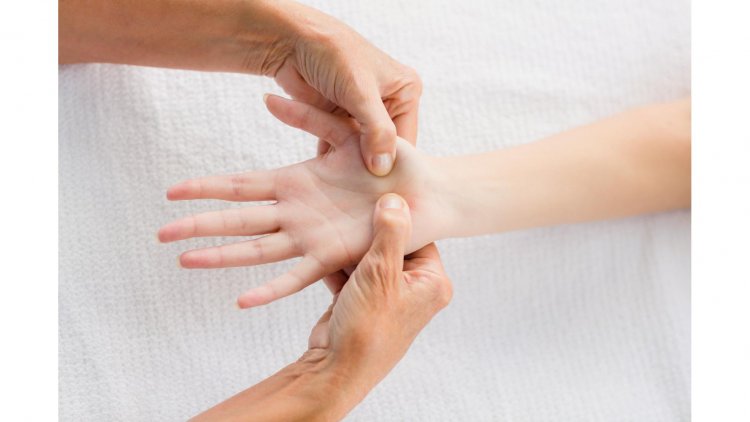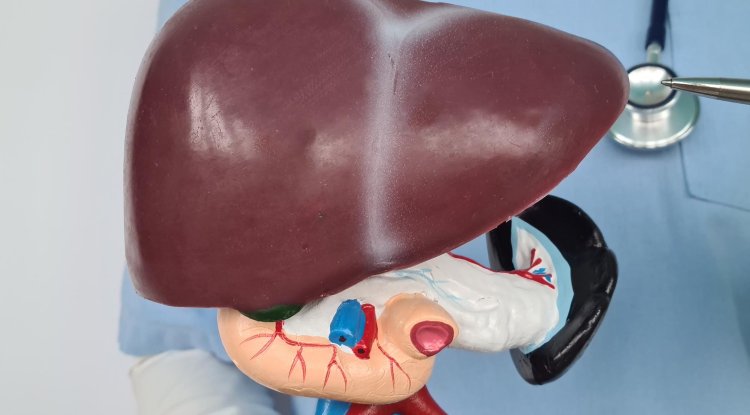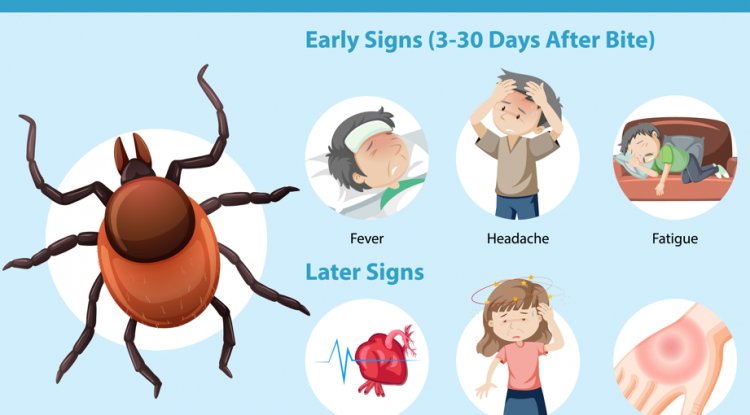The Hidden Power of Touch: Unveiling Acupressure for Pain Relief
Acupressure, an ancient practice rooted in Traditional Chinese Medicine (TCM), has increasingly captured the attention of modern wellness enthusiasts. This technique, which involves applying physical pressure to specific points on the body, offers a natural and holistic approach to managing pain. The benefits of acupressure extend beyond mere symptom relief; they encompass a range of physiological and psychological improvements. By understanding the mechanisms behind acupressure and exploring its varied applications, one can appreciate its role in promoting overall health and well-being.

The Science Behind Acupressure
Acupressure operates on principles similar to acupuncture, but without the needles. It is based on the concept of "qi" (pronounced "chee"), the vital energy that flows through meridians or pathways in the body. According to TCM, blockages or imbalances in the flow of qi can lead to pain and illness. By applying pressure to specific acupoints, practitioners aim to restore balance and alleviate discomfort.
Modern science has begun to support some of these traditional beliefs. Research has shown that acupressure can influence the body's pain pathways and biochemical responses. When pressure is applied to an acupoint, it stimulates the nervous system to release endorphins, the body’s natural painkillers. Additionally, acupressure may enhance blood circulation and lymphatic drainage, which helps reduce inflammation and promote healing.
Techniques and Applications
Basic Acupressure Techniques
Acupressure techniques are relatively simple and can be performed by anyone with a basic understanding of the practice. Here are a few fundamental methods:
- Finger Pressure: Use your fingertips to apply gentle yet firm pressure to the acupoints. The pressure should be enough to feel a slight sensation but not cause pain.
- Circular Motions: For some points, applying pressure in a circular motion can be more effective. This method helps in stimulating the acupoints more deeply.
- Pulsing Pressure: Alternating between applying pressure and releasing it can help in mobilizing the qi and enhancing the therapeutic effect.
Key Acupoints for Pain Relief
Several acupoints are commonly used for pain relief. These include:
- LI4 (Hegu): Located between the thumb and index finger, this point is renowned for alleviating headaches, neck pain, and general discomfort.
- PC8 (Laogong): Situated in the middle of the palm, this point is useful for calming the mind and relieving stress-related pain.
- ST36 (Zusanli): Found on the lower leg, just below the kneecap, ST36 is often used to support digestion and boost overall vitality.
- LV3 (Taichong): Located on the top of the foot, between the first and second toes, LV3 is known for its effectiveness in treating lower back pain and menstrual cramps.
Acupressure in Managing Specific Types of Pain
Chronic Pain
Chronic pain, which persists for longer periods, can be challenging to manage. Acupressure offers a non-invasive option for relief. By targeting specific acupoints related to chronic pain, individuals may experience reduced discomfort and improved quality of life. For instance, ST36 and LI4 are frequently used to manage chronic pain conditions such as arthritis and fibromyalgia.
Headaches and Migraines
Headaches and migraines can be debilitating, impacting daily functioning and overall well-being. Acupressure can provide relief by targeting points like LI4 and GB20 (located at the base of the skull). Applying pressure to these points can help release tension and improve blood flow to the head, potentially reducing the frequency and intensity of headaches.
Menstrual Cramps
Menstrual cramps are a common issue for many women. Acupressure techniques focusing on points like LV3 and SP6 (located on the inner leg, just above the ankle) can help alleviate menstrual pain. Regular application of pressure to these points may reduce cramping and promote a more comfortable menstrual cycle.
Back Pain
Back pain, whether acute or chronic, affects a significant portion of the population. Acupressure can target specific points to ease tension and improve flexibility. Points such as BL23 (located on the lower back, near the kidneys) and DU3 (located on the lower back, just above the sacrum) are often used to address back pain and support spinal health.
Combining Acupressure with Other Therapies
Acupressure can be effectively combined with other therapies to enhance overall pain management. For example:
- Massage Therapy: Integrating acupressure with massage can provide deeper relief. The combination can address both the muscle tension and the energy imbalances that contribute to pain.
- Yoga and Stretching: Yoga and stretching exercises can complement acupressure by improving flexibility and reducing muscle tightness. Certain yoga poses may also stimulate acupoints and enhance the flow of qi.
- Meditation and Relaxation: Acupressure combined with meditation or relaxation techniques can help manage stress, which is often a contributing factor to chronic pain. Mindfulness practices can amplify the benefits of acupressure by promoting mental calmness and emotional balance.
Self-Acupressure: A Practical Guide
For those interested in exploring acupressure on their own, it's important to approach the practice with some basic knowledge and techniques. Self-acupressure can be a valuable tool for managing everyday discomfort and maintaining overall wellness.
Getting Started
- Identify the Right Points: Start by learning about acupoints relevant to your specific needs. There are many resources available, including books and online guides, that provide detailed descriptions and illustrations of acupoints.
- Find a Comfortable Position: Choose a comfortable position where you can easily access the acupoints. You can sit or lie down, depending on what works best for you.
- Apply Gentle Pressure: Use your fingers or thumbs to apply gentle pressure to the acupoints. Experiment with different techniques to find what feels most effective.
- Be Consistent: Regular practice is key to experiencing the benefits of acupressure. Set aside time each day or as needed to perform acupressure and observe any changes in your symptoms.
- Listen to Your Body: Pay attention to how your body responds to acupressure. If you experience any discomfort or adverse effects, adjust the pressure or consult a professional for guidance.
Incorporating acupressure into your pain management routine can provide a natural and effective way to address various types of pain. By understanding the principles behind this practice and learning how to apply it effectively, individuals can harness the power of touch to enhance their overall well-being.
Integrating Acupressure into Daily Life
Incorporating acupressure into your daily routine can significantly enhance your overall well-being and contribute to pain relief. By understanding how to integrate this practice effectively, you can reap its full benefits and improve your quality of life. Here’s how you can seamlessly incorporate acupressure into various aspects of your daily life.
Morning Routine
Starting your day with acupressure can set a positive tone and boost your energy levels. Consider incorporating these practices into your morning routine:
- Stimulate Energy Points: Begin by applying gentle pressure to points like LI4 and ST36. These points can help invigorate your energy levels and prepare you for the day ahead.
- Relieve Morning Tension: If you wake up feeling stiff or tense, use acupressure to target points related to muscle relaxation. Points such as BL23 and DU3 can help ease back stiffness and promote overall flexibility.
Workday Wellness
Managing stress and maintaining focus during your workday can be challenging. Acupressure can be a valuable tool for improving concentration and reducing work-related tension:
- Combat Desk Stress: Use acupressure to alleviate tension accumulated from sitting at a desk for long periods. Points like PC8 and LI4 can help reduce stress and improve mental clarity.
- Enhance Focus: If you find yourself struggling to concentrate, stimulate points such as GV20 (located on the top of the head) to enhance mental sharpness and cognitive function.
Evening Relaxation
Ending your day with acupressure can promote relaxation and improve sleep quality. Incorporate these practices into your evening routine:
- Calm the Mind: Apply pressure to points like SP6 and PC8 to help calm your mind and prepare for restful sleep. These points can also alleviate anxiety and promote a sense of tranquility.
- Ease Muscle Tension: If you experience muscle tension from the day’s activities, use acupressure on points such as BL23 and DU3 to relax your muscles and reduce any residual discomfort.
Acupressure in Managing Stress and Anxiety
Stress and anxiety are common issues that can impact physical health and well-being. Acupressure offers a natural way to manage these conditions and promote emotional balance:
- Stress Relief: Points such as GV20 and PC8 are effective in reducing stress and anxiety. Regular stimulation of these points can help calm the nervous system and improve emotional resilience.
- Improve Sleep: Insomnia and poor sleep quality are often linked to stress and anxiety. By using acupressure techniques on points like SP6 and HT7 (located on the wrist), you can enhance your ability to fall asleep and enjoy more restorative rest.
Acupressure for Specific Health Conditions
Acupressure can be particularly beneficial for managing chronic health conditions and enhancing overall wellness. Here’s how it can be used for various health issues:
- Digestive Health: For digestive issues such as bloating or indigestion, acupressure points like ST36 and CV12 (located on the abdomen) can help improve digestion and alleviate discomfort.
- Immune Support: Boost your immune system with acupressure points such as LI4 and ST36. These points are known to enhance the body’s natural defenses and support overall immune function.
- Chronic Fatigue: If you experience chronic fatigue, acupressure on points like ST36 and GV4 (located on the lower back) can help increase energy levels and combat feelings of exhaustion.
Acupressure for Emotional Well-being
Emotional well-being is closely linked to physical health. By addressing emotional imbalances through acupressure, you can achieve greater overall harmony:
- Manage Mood Swings: Points such as LV3 and PC6 (located on the forearm) are useful for balancing emotions and reducing mood swings. Regular stimulation of these points can help stabilize your emotional state.
- Enhance Overall Wellness: Incorporate acupressure into your self-care routine to promote a sense of well-being. Points like HT7 and SP6 can help balance your emotions and support mental health.
Incorporating acupressure into your daily life offers a practical and holistic approach to managing pain, stress, and various health conditions. By integrating this ancient practice into your routine, you can experience significant improvements in your physical and emotional well-being.
Overall, acupressure stands out as a valuable tool for enhancing health and managing pain. Its simplicity, combined with its effectiveness, makes it an accessible option for those seeking a natural and complementary approach to wellness. Whether used alone or in conjunction with other therapies, acupressure can contribute to a more balanced and healthier lifestyle.
Disclaimer: The information provided in this article is for educational purposes only and should not be considered medical advice. If you have any health concerns or are experiencing symptoms, it is important to consult with a healthcare professional, such as a doctor or clinic, for proper diagnosis and treatment. Always seek the advice of your doctor or other qualified health provider with any questions you may have regarding a medical condition. Do not disregard professional medical advice or delay in seeking it because of something you have read in this article.
What's Your Reaction?





















